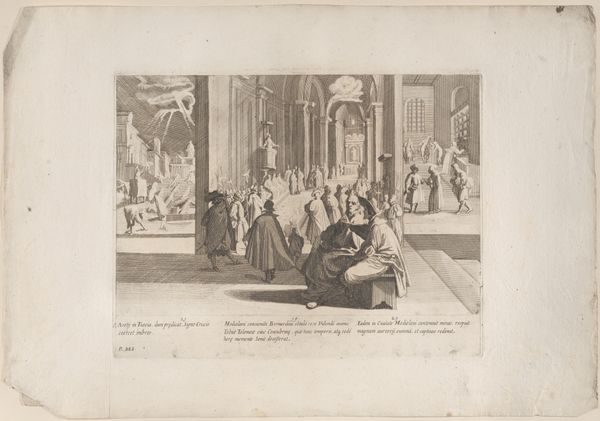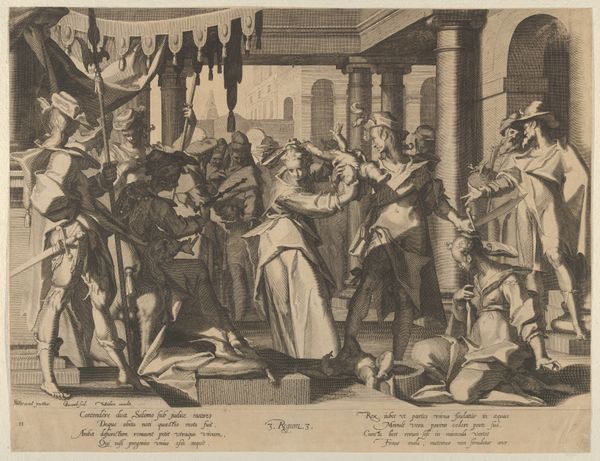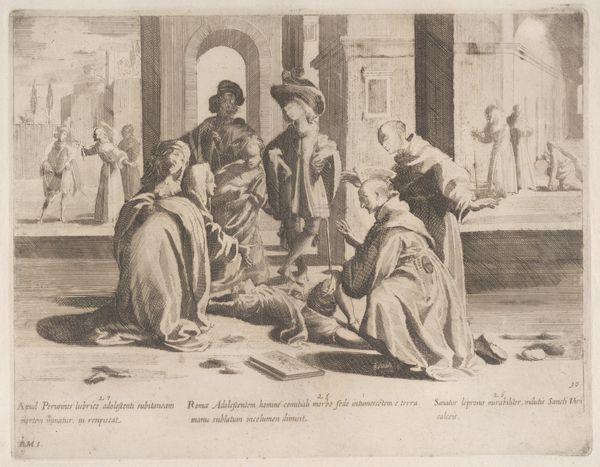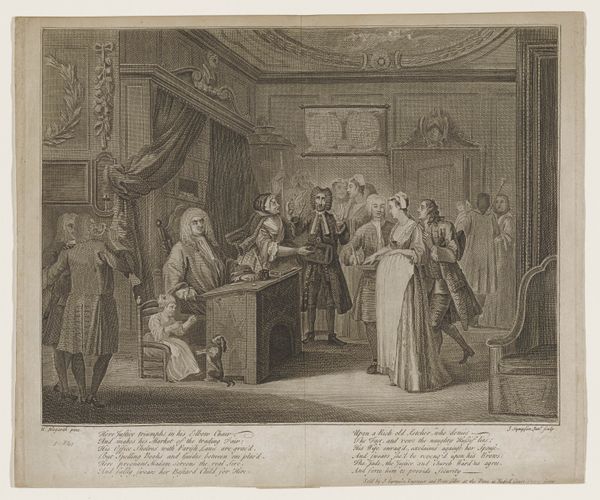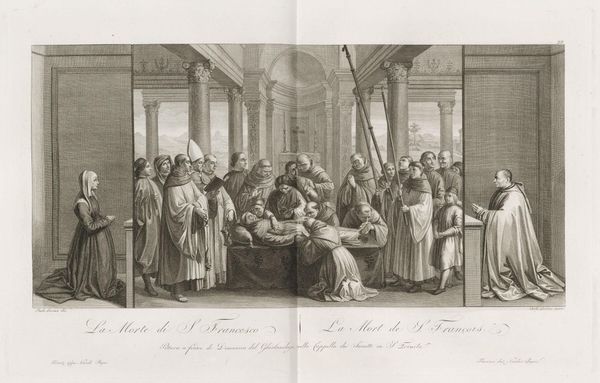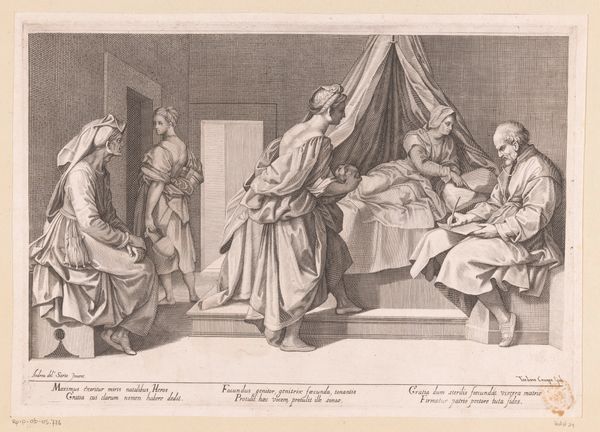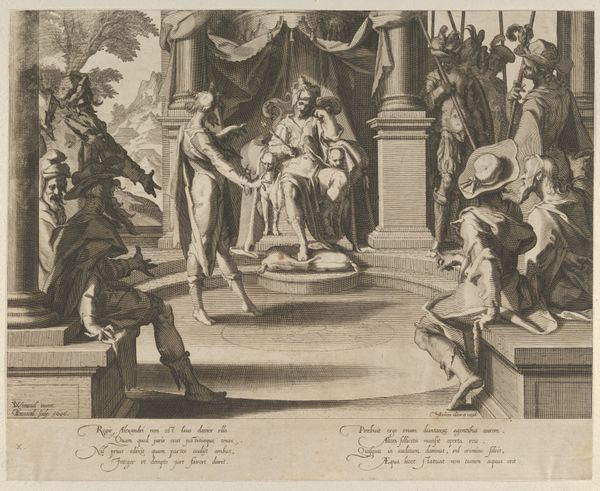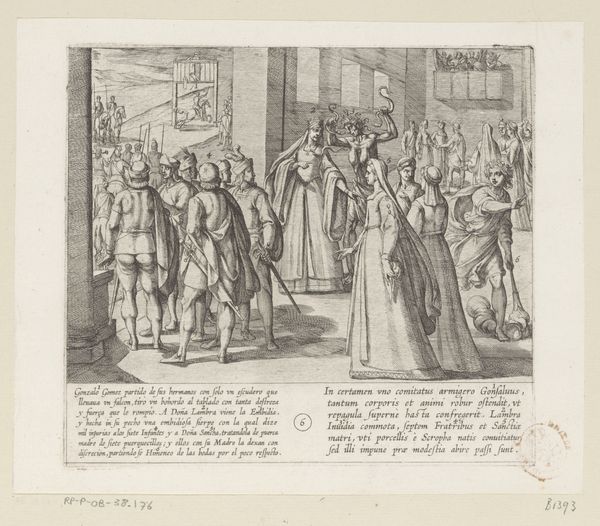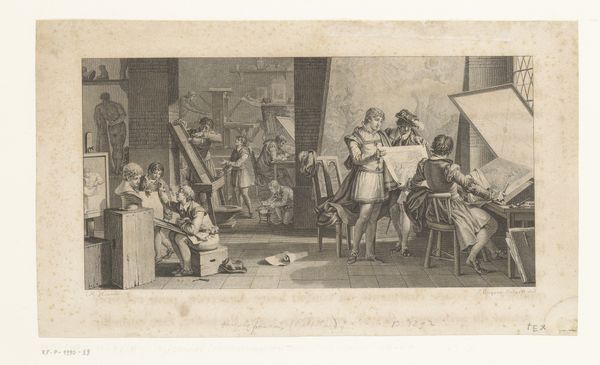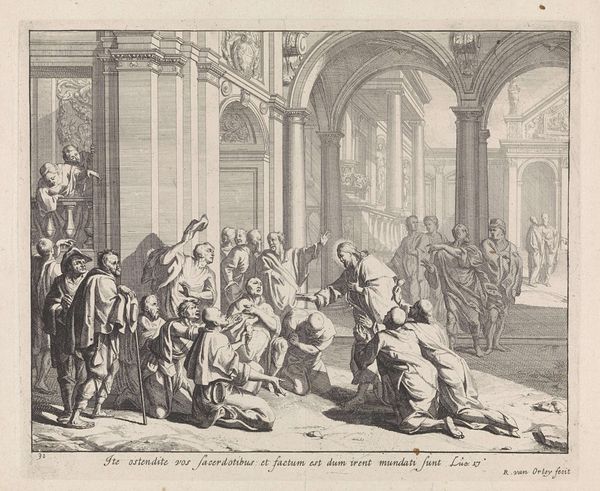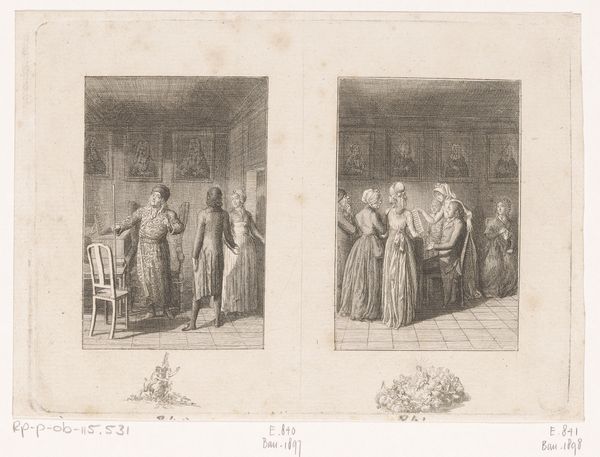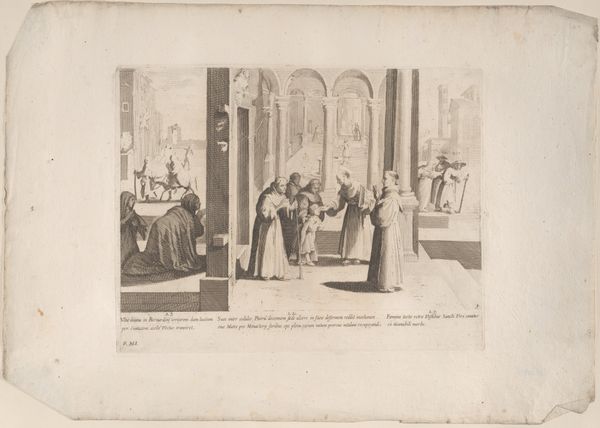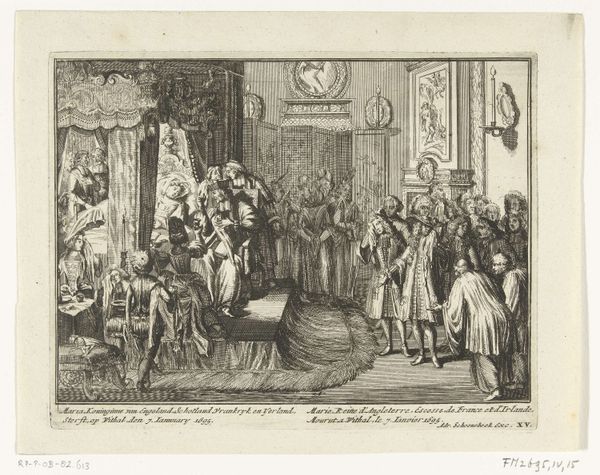
Episode 7: Sienese hospitals turn to the rector in desperation during an outbreak of disease; Episode 8: A terrible pestilence plagues Siena; Episode 9: Saint Bernardino withdraws to hold vigil and contemplate, from "The Life of Saint Bernardino of Siena" 1610 - 1639
0:00
0:00
drawing, print, engraving
#
drawing
#
narrative-art
#
baroque
# print
#
figuration
#
history-painting
#
italian-renaissance
#
engraving
Dimensions: Plate: 8 3/8 × 10 13/16 in. (21.3 × 27.4 cm) Sheet: 12 1/16 × 17 7/16 in. (30.7 × 44.3 cm)
Copyright: Public Domain
Editor: This engraving from the early 17th century, by Bernardino Capitelli, depicts scenes from “The Life of Saint Bernardino of Siena”. There's such a strong contrast between the activity near the Rector and the scenes of illness in the background... How do you interpret this work, particularly within its historical context? Curator: Well, immediately, I think about how art functions publicly during times of crisis. Consider that engravings like this were widely distributed. Capitelli is not simply illustrating the *Life of Saint Bernardino*, he’s also presenting a model for civic and religious response during outbreaks. Do you see how the artist has staged these vignettes? Editor: I do, actually. It feels like he's deliberately contrasting those who serve versus those who are suffering. Curator: Precisely. The artist is commenting on both spiritual devotion *and* institutional roles in managing public health. Notice, in the "Episode 7" section, how the artist details the architectural space? Those architectural cues remind us that public health during epidemics relied on specific physical infrastructures *and* dedicated organizations. Do you think the artist sought to idealize their response? Editor: Maybe. Showing them turning to the Rector makes the whole organization seem proactive, instead of helpless. Curator: Exactly! This creates a specific visual narrative for the public to witness, perhaps learn from, and, to some extent, to internalize within their cultural memory. Even those scenes with suffering have a political dimension because, for viewers at the time, such scenes would conjure real memories or prompt social action. Editor: It's fascinating how it combines religious narrative with public service! It makes me think about how our current visual media will be interpreted later as reflections of this time. Curator: A valuable point to ponder, as we also become part of history's narrative.
Comments
No comments
Be the first to comment and join the conversation on the ultimate creative platform.
